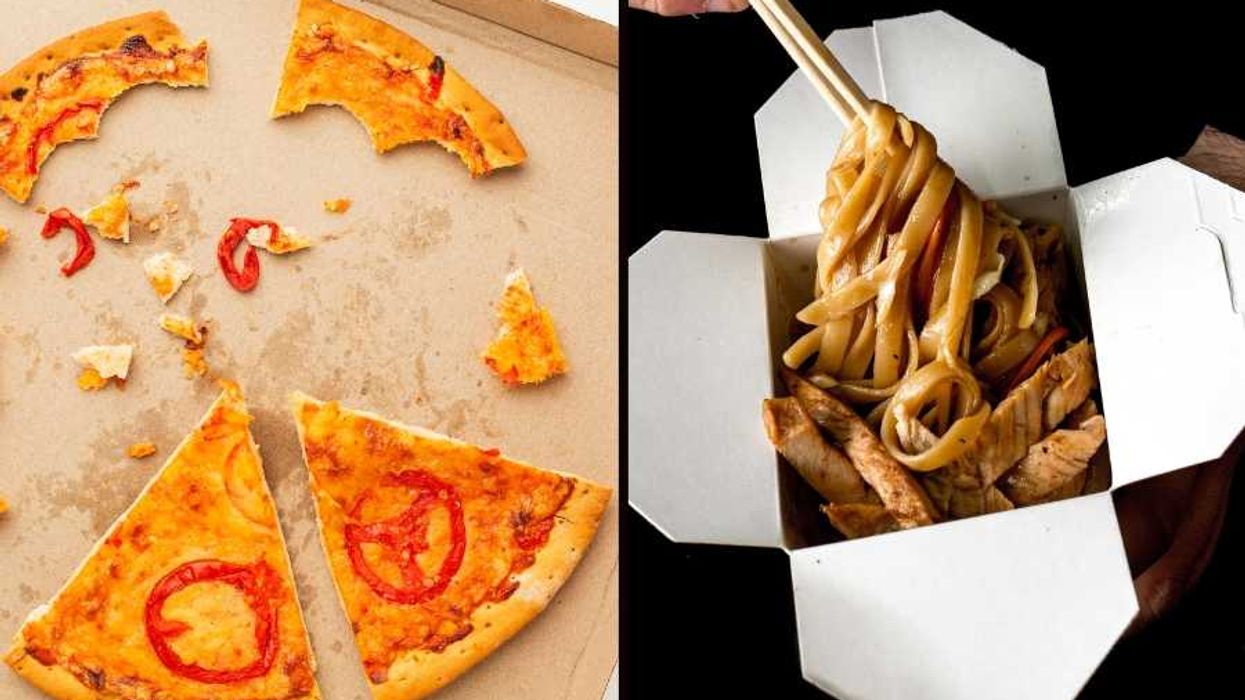I have complicated feelings toward leftovers, but my general principle is roughly this: If I love it the first time around, I might savor it even more on day two. This applies to the ultimate morning-after food, pizza (duh), but also to Pad Thai and pasta and that chicken curry I couldn’t quite finish at the restaurant. A lot of people appear to feel this same way: In a 2019 survey, the pizza-ordering platform Slice found that 53% of Americans preferred cold pizza in the morning over typical breakfast foods like eggs.
It’s not just a cultural cliché—there’s actual science behind certain foods tasting better the second time around. The YouTube channel Weird History Food explored this topic in a deep-dive video called "Why Does Some Food Taste Better as Leftovers?" One crucial answer: Sitting in the refrigerator really does affect how flavors blend. "Time…is an ingredient," our narrator tells us. "One your spice rack just can’t possibly compete with."
- YouTube www.youtube.com
Cold pizza rules—but why?
Before getting into the nitty gritty, the video takes us on a guided tour of leftover staples, including pizza, baked varieties of pasta ("Cold ziti or next-day lasagna doesn’t just survive refrigeration—it thrives on it"), soups and stews, chilis and curries, desserts like cobblers and pies, and Chinese take-out staples like fried rice, Lo Mein noodles, and General Tso’s chicken ("They all benefit from a night in the fridge, where the soy sauce and spices have more time to settle into the noodles and rice"). They end by highlighting the "MVP of leftovers": turkey. "Heck, the entire Thanksgiving holiday is practically engineered around this bird’s second act," they argue. "Think about it, and you’ll find that pretty much nobody ever brags about the Thursday turkey. It’s always the Friday turkey sandwich that goes down in legend."
That’s all great, but it leaves the obvious question: Why? There are multiple reasons, including the process of "starch retrogradation," in which starch molecules in pasta, rice, and bread reorganize after they’ve cooled. "Instead of being mushy," the video notes, "the texture firms up in a way our brains interpret as more satisfying."
Cold pizza, they explain, tastes so great because it’s lost that "greasy mouthfeel" after fats have solidified, with the crust having stiffened in a way that "actually makes it easier to eat" at this temperature. "In other words," they conclude, "according to science, pizza was practically engineered to win the Leftover Olympics."
- YouTube www.youtube.com
The science of leftovers
Look around online, and you’ll find numerous sources pointing to similar conclusions. PBS notes that some dishes like curries or chilis can offer surprising flavor profiles in the leftover stage, with elements working together in new ways. Cordelia Running, an associate professor of nutrition science at Purdue University, told the publication that many spices' flavor molecules are fat-soluble, meaning they naturally bind to lipids. She noted, “Everything wants to balance out…[W]hen you take a spicy chili pepper and you set it in something that has any sort of fat present in it, over time, some of that spicy, fat soluble compound is going to just slowly seep out into the fat itself." And food scientist Guy Crosby, chatting with The Huffington Post, noted that the reheating process helps "liberate" some flavor molecules that might be "trapped inside fats or inside starch or vegetables."
All of this to say: You’re not crazy with all your hot (or should we say "lukewarm?) leftover takes, and you’re not alone either.
- YouTube www.youtube.com


















 A subterranean waterfallCanva
A subterranean waterfallCanva


 The Emergency Department.Photo credit:
The Emergency Department.Photo credit:  Little girl with a splinter.Photo credit:
Little girl with a splinter.Photo credit:  Woman on phone after car accident.Photo credit:
Woman on phone after car accident.Photo credit: 
 A hotel clerk greets a guestCanva
A hotel clerk greets a guestCanva Gif of Faye Dunaway' as Joan Crawford demanding respect via
Gif of Faye Dunaway' as Joan Crawford demanding respect via  An empty rooftopCanva
An empty rooftopCanva
 Two people study a mapCanva
Two people study a mapCanva Foggy Chinese villageCanva
Foggy Chinese villageCanva

 An excerpt of the faxCanva
An excerpt of the faxCanva